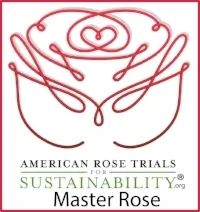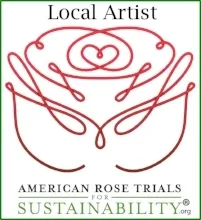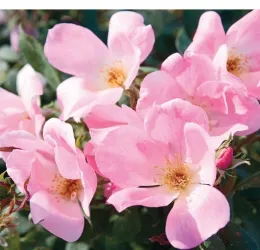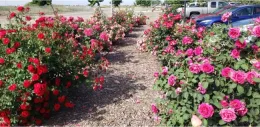During my time as a Master Gardener in San Joaquin County, I was one of the evaluators gathering data and evaluating roses for the American Rose Trials for Sustainability. Being allowed to participate was educational as well as extremely rewarding. Participating as an evaluator for this trial was an exciting volunteer opportunity for me. Being an avid rose lover, I had around 200 roses on my property at that time.
Many of us have seen beautiful rose cultivars and wondered “How will that rose do in my garden?” Growers recognize that not all cultivars grow well in all areas. It is important to find a trustworthy and independent voice to help guide with our selection of rose varieties. The American Rose Trials for Sustainability evaluates cultivars for nursery professionals and home gardeners.
The American Rose Trials for Sustainability (A.R.T.S.®)was initiated in 2012. In 2018, the UC Master Gardener Program of San Joaquin County became part of the trial under the leadership of Karrie Reid, UC ANR Environmental Horticulture Advisor.
A.R.T.S.® mission is “To identify, through regional evaluation and testing under low input conditions, the most disease and pest resistant, hardiest and most garden-worth rose cultivars and to provide objective, accurate and reliable information about the cultivars tested for each region to industry professional and the gardening public.”
All their horticultural decisions are guided by scientifically-sound, research-based information regarding ecological responsibility. By using strong methodology and scientifically sound protocol, the trials identify roses that perform well in specific regions while grown under minimal input conditions. These conditions are: No pesticides are to be used; no deadheading is allowed; no pruning is allowed except to remove canes killed by winter damage or by rodents; no covering of plants to protect from frost; and no fertilizers to be applied.
The A.R.T.S.® team is made up of scientists, public horticulturists, nursery growers and extension professionals. It is their goal to identify roses that are the most pest resistant, drought tolerant, low maintenance, vigorous and beautiful growers for each unique US climate region.
The roses are evaluated monthly during the growing season for two consecutive years. To earn an A.R.T.S.® Local Artist award the test roses must perform equal or better than the industry standard cultivar which is planted with them. Awards are given related to their health, flower power and plant form. There are no minimum or maximum awards. The “Master Rose” award is awarded to roses winning four or more Local Artist awards.



TRIAL SITES

A.R.T.S.® uses the Köppen climatic classification system to distinguish regions, a system that is well-recognized by ecologists throughout the world. A.R.T.S.® identifies the best rose varieties for climate regions strategically located throughout the continental United States. These sites are hosted by partners who share A.R.T.S.® mission. Currently there are 22 test sites which include universities, colleges, municipalities, aboretas, and botanical gardens. California is classified as a Mediterranean climate and currently there are only two test sites: UC Extension San Joaquin County (2018) and Fullerton Arboretum (2019).
Evaluators – What do they do?

The ground was prepared with the addition of compost. This was the only amendment added during the two-year test evaluation. Sixty bare root roses arrived in January/February 2018 and were planted by Karrie and her team of volunteers. There were three designated blocks, each with twenty of the same varieties. Each variety was labeled with a number for identification.

Once spring arrived and growth appeared the evaluation began. A block of 20 roses was assigned to each evaluator. Each block was evaluated twice a month during the growing season for two consecutive years by 2 different evaluators. Using an evaluation form the evaluator noted their observation and rated on a 10-point scale for the following:
Foliage: Retention, chlorosis, disease, insects, and mites
Form: Growth habit, dead canes
Flowers: Bloom coverage, bloom shape, fragrance, spent petals/calyces, hip formation
The data collected by the evaluators is submitted to the A.R.T.S.® program. Their grading protocol is: Foliage 45%, Form 12.5%, Flowers 42.5%.
Make sure to read our blog post (link) to see the Local Artist Awards for the California growing region.
Resources: American Rose Trials for Sustainability

